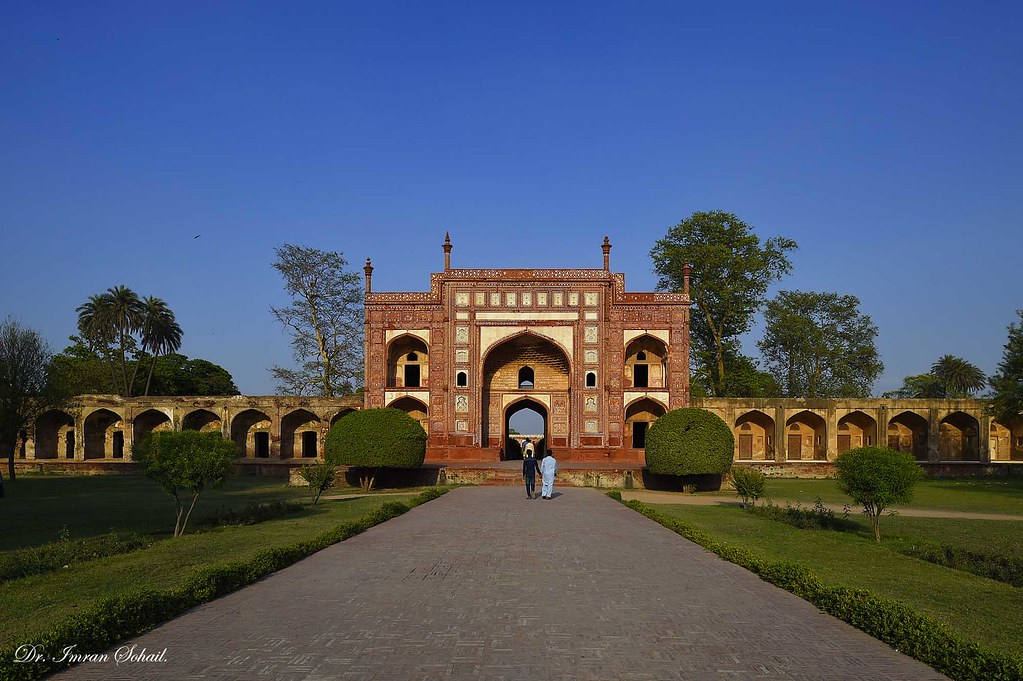The Akbari Sarai (Palace of Akbar) is a large oblong shaped courtyard situated between Jahangir’s Tomb and Asif Khan’s Tomb in Lahore city in Punjab province of Pakistan. This unique Mughal era structure was built in 1637 to host travellers and caretakers of Jahangir’s Tomb. It also served as mail station known as dak chowki.
History
The court historian to the Emperor Shah Jahan, Abdul Hamid Lahori, mentioned the original name of the building as “Jilu Khana-e-Rauza (attached court of the tomb) in his book the Padshahnama. The name Akbari Sarai began to be called during the reign of Islam Shah Suri in mid-1550s, not during the reign of the Mughal Emperor Akbar.
Architecture
The Sarai measuring 797 feet by 610 feet covering 12 acres of land is bordered by a raised terrace containing 180 cells with front verandas and a common passage. The Sarai has four Burjes in its corners containing elaborate chambers feature an elliptical hall in front with a veranda and an octagonal room in the back.
It is accessible by two stately entrances on its north and on the south. Featuring typical Mughal style art, these gates are beautifully adorned with frescoes and Ghalib Kari (a network of ribs in stucco and plaster applied to curved surfaces in each archway). Its topographies including the decorative elements, the style of the structure, the size of the bricks used for construction; the Sarai and the eastern entrance gateway to the Jahangir’s tomb, featuring a large double storied iwan linked by four other smaller arched niches, are believed to have been built in the same period.
To the west of the Sarai, in the middle of the row of cells, is a mosque from the Suri period with three splendid domes. Although most of the fine artwork is already gone, its sandstone facing decoder with inlay work is graceful. The cells which line the complex and its gateways date from the Shah Jahan period in the mid-1600s.
Administration
The Sarai actually served as a state guesthouse and was administered by a Shahna (official caretaker) and several assistants. It also had a physician and a resident baker. Fodder for animals, hot and cold water, and bedsteads were provided free of cost.
During the Sikh era, Maharajah Ranjit Singh converted the complex into a cantonment of one of his foreign generals called Musa Farangi. It was also used as a private residence. Likewise, during the British era, it was used as a rail depot and severely damaged following the construction of the nearby rail line.
All three monuments – Akbari Sarai, the Tomb of Jahangir, and Tomb of Asif Khan – were inscribed on the tentative list of UNESCO World Heritage Sites in 1993.




Comment (0)